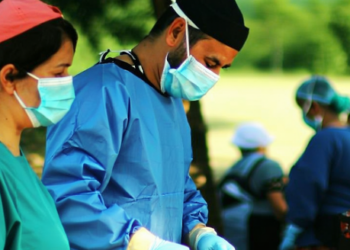Understanding Welfare Programs: A Brief Overview
Welfare programs are designed to provide financial assistance and support services to individuals and families in need. These programs aim to alleviate poverty, improve health, and enhance overall well-being. They encompass various forms of aid, including cash assistance, food support, housing subsidies, and healthcare benefits. In addition to direct aid, many communities offer local resources and guidance to help individuals navigate these programs effectively. Understanding how these programs operate and the eligibility criteria is crucial for those seeking support. Additionally, welfare programs often include job training and educational opportunities to help recipients achieve long-term self-sufficiency. With proper utilization, welfare programs can be a significant stepping stone towards economic stability and independence.
The Importance of Dental Benefits in Welfare
Dental benefits are a crucial component of welfare programs, as they address the oral health needs of vulnerable populations. Good oral health is essential for overall wellness, impacting everything from nutrition to self-esteem. Welfare programs often include dental services to ensure that low-income individuals have access to necessary dental care. This can range from routine check-ups and cleanings to more complex procedures like fillings and extractions. By providing these benefits, welfare programs help prevent serious dental issues, reduce healthcare costs, and improve the quality of life for beneficiaries. Access to dental care is particularly important for children, who require early intervention to prevent long-term dental problems.
Types of Dental Services Covered Under Welfare
The range of dental services provided under welfare programs can vary, but generally includes essential and preventive care. Common services covered are routine check-ups, cleanings, and fluoride treatments. These preventive measures are crucial in maintaining oral health and preventing more severe dental issues. Additionally, welfare programs may cover restorative services such as fillings, root canals, and extractions. In some cases, limited coverage for orthodontic treatments and dentures may also be available. By offering a comprehensive spectrum of services, these programs aim to ensure that beneficiaries receive the dental care needed to maintain a healthy mouth and overall well-being.
Vision Benefits Explained: What to Expect
Vision benefits under welfare programs are designed to help individuals maintain good eye health and correct vision problems. These benefits typically include regular eye exams, which are essential for detecting issues early and prescribing appropriate treatments. Welfare programs may also cover the cost of eyeglasses or contact lenses, ensuring that beneficiaries can achieve optimal vision. For those with more serious eye conditions, welfare programs might provide access to specialized treatments and surgeries. By addressing vision health, these programs help individuals perform daily tasks more effectively, improve their quality of life, and reduce the risk of accidents or further health complications.
Common Vision Services Included in Welfare Plans
Welfare plans offering vision benefits typically provide a variety of services to ensure comprehensive eye care. Routine eye examinations are often covered, which help in detecting conditions like glaucoma, cataracts, and macular degeneration early. These plans usually also cover the cost of prescription eyeglasses and contact lenses, providing necessary vision correction options. In some cases, prescription sunglasses might be included as well. For individuals with significant eye health issues, welfare plans may offer coverage for surgery and other specialized treatments. These comprehensive services ensure that beneficiaries maintain good eye health and have access to the necessary means to correct vision impairments.
How to Access Dental and Vision Benefits
Accessing dental and vision benefits through welfare programs involves understanding eligibility requirements and the application process. Typically, individuals must meet income guidelines and other criteria set by the program. Applying can be done through local welfare offices, online portals, or community organizations that assist with welfare services. Once enrolled, beneficiaries will receive information on covered services, participating providers, and how to schedule appointments. It is essential to stay informed about the terms of coverage and any necessary renewals or updates to maintain benefits. By following the correct procedures, eligible individuals can access vital dental and vision care to support their overall health.



